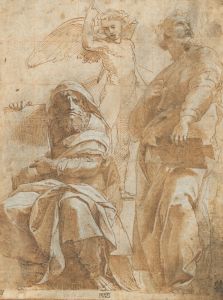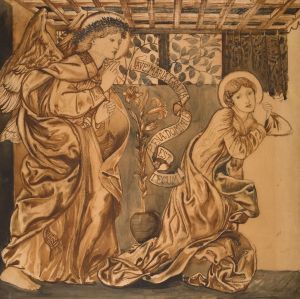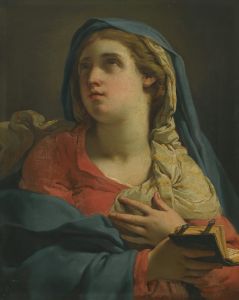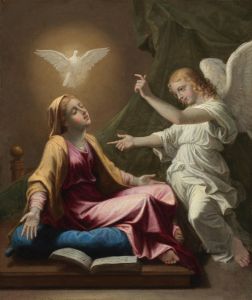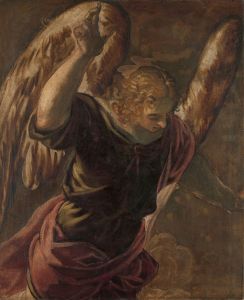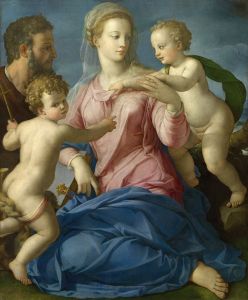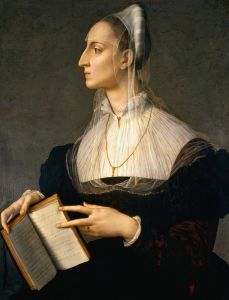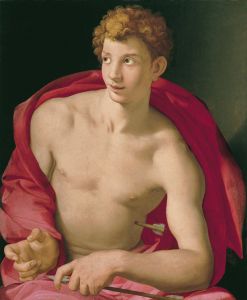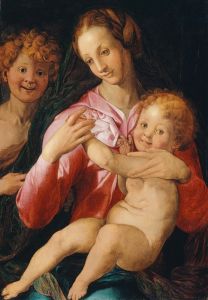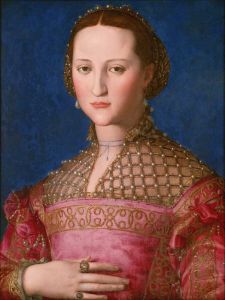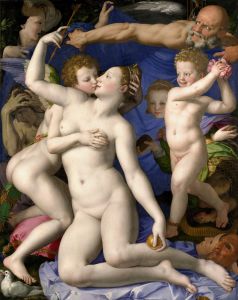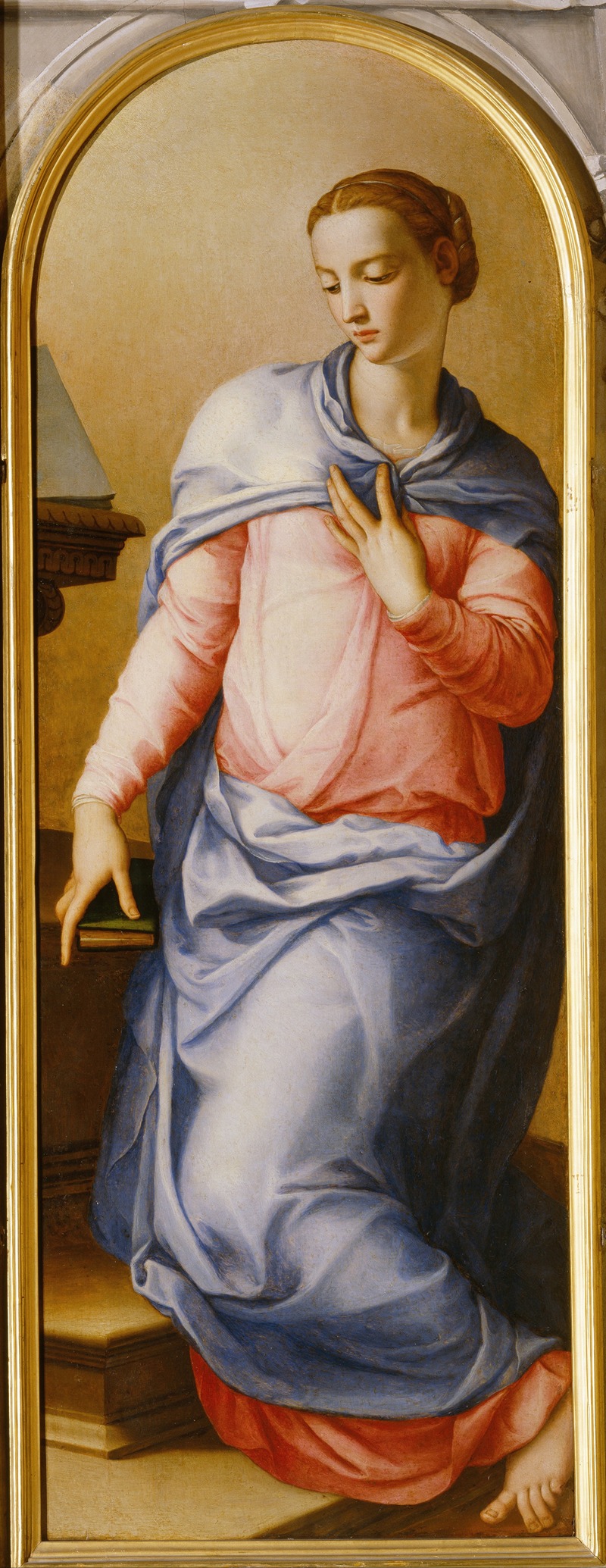
Virgin of the Annunciation
A hand-painted replica of Agnolo Bronzino’s masterpiece Virgin of the Annunciation, meticulously crafted by professional artists to capture the true essence of the original. Each piece is created with museum-quality canvas and rare mineral pigments, carefully painted by experienced artists with delicate brushstrokes and rich, layered colors to perfectly recreate the texture of the original artwork. Unlike machine-printed reproductions, this hand-painted version brings the painting to life, infused with the artist’s emotions and skill in every stroke. Whether for personal collection or home decoration, it instantly elevates the artistic atmosphere of any space.
Agnolo Bronzino, an eminent Italian Mannerist painter of the 16th century, is renowned for his sophisticated and highly detailed portraits, as well as his religious compositions. One of his notable works is "Virgin of the Annunciation," which exemplifies his mastery in capturing religious themes with elegance and precision.
"Virgin of the Annunciation" is a depiction of the biblical scene of the Annunciation, where the Archangel Gabriel announces to the Virgin Mary that she will conceive the Son of God, Jesus Christ. This subject has been a popular theme in Christian art, symbolizing the moment of divine intervention and the incarnation of Christ. Bronzino's interpretation of this scene is marked by his characteristic style, which includes a meticulous attention to detail, a refined use of color, and a serene, almost sculptural quality to his figures.
In this painting, Bronzino portrays the Virgin Mary with a sense of grace and poise. Her expression is calm and contemplative, reflecting her acceptance and understanding of the divine message. The artist's use of color is particularly noteworthy; he employs a rich palette to highlight the Virgin's garments, often using deep blues and reds, which are traditional colors associated with Mary in Christian iconography. The textures of the fabrics are rendered with exquisite detail, showcasing Bronzino's skill in depicting luxurious materials.
The composition of "Virgin of the Annunciation" is carefully balanced, with the figure of Mary typically positioned to one side, creating a harmonious interplay between the divine and the earthly. The background is often subdued, allowing the figures to stand out prominently. Bronzino's use of light and shadow adds depth to the scene, enhancing the three-dimensionality of the figures and contributing to the overall sense of tranquility and reverence.
Bronzino's work is also characterized by its intellectual and emotional restraint, a hallmark of Mannerist art. Unlike the more dynamic and emotional compositions of the preceding High Renaissance, Mannerism often emphasizes elegance and sophistication. In "Virgin of the Annunciation," this is evident in the controlled poses of the figures and the subtlety of their expressions, which convey a sense of divine grace and serenity.
The painting reflects Bronzino's deep understanding of religious themes and his ability to convey complex theological concepts through visual art. His work was highly regarded by his contemporaries and continues to be appreciated for its technical brilliance and aesthetic beauty. "Virgin of the Annunciation" is a testament to Bronzino's skill as a painter and his contribution to the Mannerist movement.
While specific details about the commission or the current location of "Virgin of the Annunciation" by Bronzino may not be widely documented, his influence on religious art and his role as a court painter to the Medici family in Florence are well recognized. His works remain significant in the study of Renaissance art, offering insight into the cultural and artistic milieu of 16th-century Italy.





